

Table of contents
- Check the carrying capacity
- The right vessels
- Matching planters
- The raised bed
- The correct planting
- second year
- Third year
In this guide, we explain how to successfully plant the balcony.
Check the carrying capacity
The first thought that should be put forward to planting is the statics of the balcony. In and of itself, it is important that small balconies in particular are not overburdened. Especially when an entire raised bed is planned, this involves a lot of soil and a correspondingly high weight. A scrutinizing look is of great importance in this case in order to insure the statics.
On a smaller scale, planting a balcony that is otherwise safe to walk on is usually not a problem. Ultimately, however, the available space also plays an important role. If the balcony is to continue to be used as a completely normal outdoor area in the future, a corresponding buffer must be planned. But even in a small space there is the opportunity to achieve wonderful results.
The right vessels
This is followed by a question that gardeners need not ask themselves in a classic garden bed. Because there all the plants and seedlings are simply planted in the ground. An artificial condition must first be created on the balcony. Depending on whether the focus should be more on flowers or the cultivation of vegetables, different variants are conceivable. In the following, we want to take a closer look at the two most important types.
Matching planters
Plant pots usually offer a single plant the opportunity to thrive on the balcony. Buyers have the advantage that there are many different variants available on the market. In this way, you can also take your own optical requirements into account. In fact, a quick look on the Internet is enough to find suitable opportunities. Here on this page you can find, for example, suitable offers that can be considered.
If you want to start gardening, it is of course advisable to invest in pots of different sizes. Because ultimately it depends on the preferred plants, which volume is necessary.
The raised bed
If you want to harvest some fresh vegetables on the balcony soon, the raised bed is usually the better choice. There is a solution for this, too, which is particularly suitable for the balcony at home. We are talking about a so-called table raised bed. This is a structure that stands on solid feet and does not reach all the way down to the ground. On the one hand, this creates the practical possibility of stowing something else under the raised bed. This fact can be an advantage, especially on a small balcony. On the other hand, this type of construction usually has a positive effect on the expected total weight. In this case, there is even no need for a floor fleece.
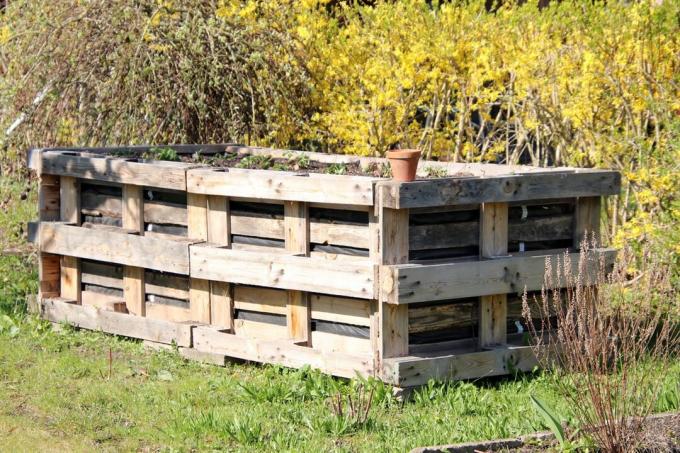
At the same time, with a little skill, you can also construct a raised bed yourself. There are numerous suitable building instructions on the Internet that can be put into practice with a little wood, for example. Of course, this approach offers the advantage that the raised bed can be flexibly adapted to your own ideas.
The right layering is of enormous importance in every raised bed. The work is not done by simply filling in some soil. As experienced gardeners know, such a raised bed usually consists of five different layers, which are usually built up from the bottom up as follows:
- Shards of pottery, pebbles and wood
- Earth
- green clippings or leaves
- manure or compost
- sifted compost or potting soil
The lower layers are deliberately designed to rot over time. In this way, on the one hand, they produce some heat, which can be badly needed by the plants on the surface. On the other hand, they gradually release nutrients that can be tapped by the roots. Incidentally, there is the possibility of using such a raised bed for a few years. Only after it has been in use for more than seven years does it need to be changed to ensure fresh nutrients again.
The correct planting
There are a few aspects that should be considered when choosing the right plants for the balcony. Traditionally, a balcony faces south or west. In this way, an enormous heat can develop there, especially in the summer months. The focus should therefore be on those plants that depend on a lot of sun and that are not affected by intense heat so quickly.
On the other hand, the nutrients of the raised bed pose a challenge when it comes to choosing the plants. Especially in the first year there is still plenty of compost and soil to be found. This has the consequence that at this time strongly consuming plants should be used, which require exactly those nutrients in large quantities.
These include, for example
- broccoli
- cauliflower
- celery
- Leek
second year
From the second year, the medium feeders are in demand, among which there are also some very interesting plants.
These include, for example
- Garlic
- carrots
- radish
- fennel
- spinach
Third year
In the third year, the focus is instead on the weak feeders who need fewer nutrients to thrive.
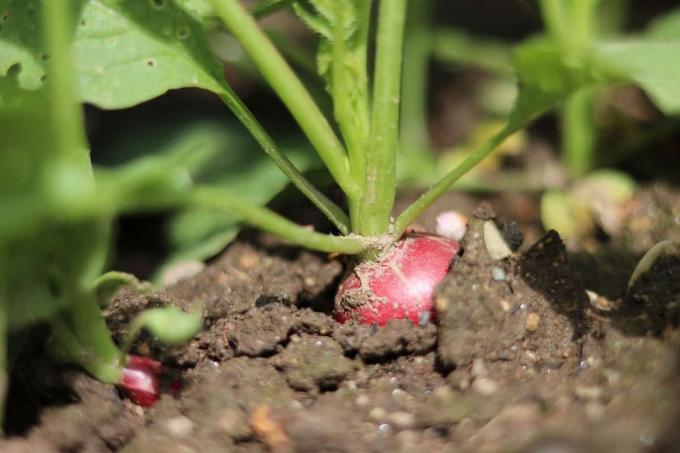
In that case, the choice is obvious
- Lamb's lettuce
- radish
- arugula
A natural vegetative variety comes about almost automatically in this way.
 Home editorial office
Home editorial office
Learn more about planting beds
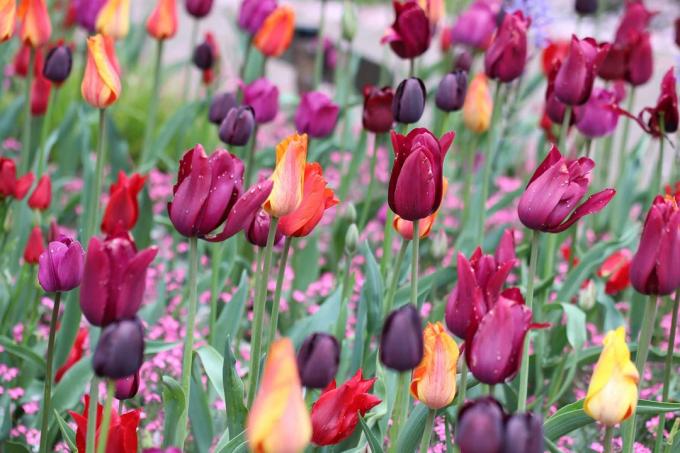
Creating a flower bed: 9 tips for planning & designing
The transformation of a "naked" garden area into a lush sea of flowers doesn't just begin with the planting. Site conditions must first be checked and suitable plants selected. If you want to design a particularly beautiful bed, you can also add a pinch of creativity when laying it out.

Building a raised bed: which stones are suitable?
A raised bed made of stones not only brings practical advantages because plants grow earlier and produce longer yields - it can also be an eye-catcher in the garden. Depending on the type of stone, however, there are significant differences.

11 Bed borders: what are the options?
There are many ways to border a garden bed. There are beautiful design borders, natural borders or those that are almost invisible. The following article briefly introduces the various bezel ideas.

Bed edging made of plants: Which ones are suitable as a bed border?
A bed border made of plants is above all temporary fads. With green vibrancy, numerous species and varieties give your ornamental and vegetable beds a picturesque setting. Let yourself be inspired by a colorful array of suitable plants with the potential for the perfect bed border.
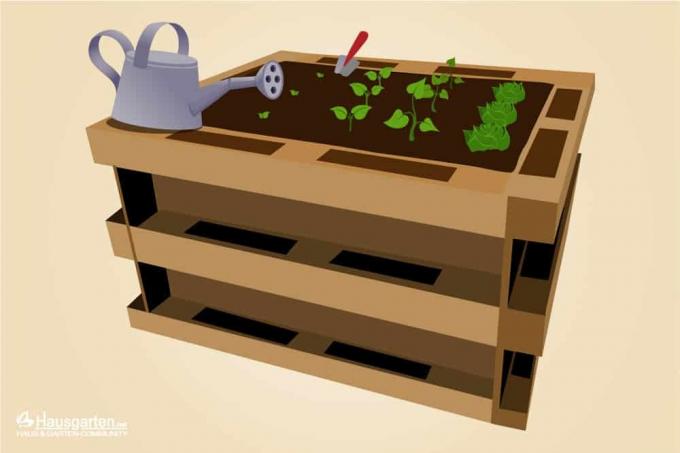
Build a raised bed from wooden pallets - the 3 best building instructions
Growing vegetables, flowers and herbs at table height makes gardening a relaxing, active pleasure. A raised bed made of wood is easy on the back, keeps voracious snails at bay and serves as a rustic eye-catcher. With a little manual skill, you can easily build a raised bed from wooden pallets yourself. The 3 best building instructions show how it works.
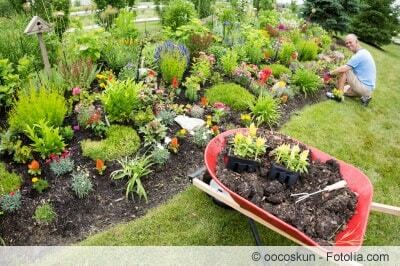
Everblooming Bed - Plants that bloom all year round
Fantastic abundance of flowers on a seemingly endless journey through the seasons, this is how an ever-blooming bed presents itself. In order for this wishful thinking to become reality, a creative combination of perennials, bulb flowers and flowering shrubs is required. Immerse yourself in our design suggestions with plants that bloom all year round.
